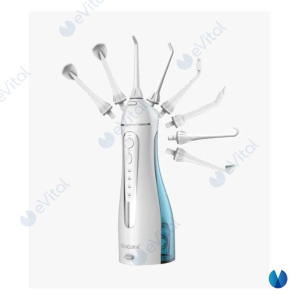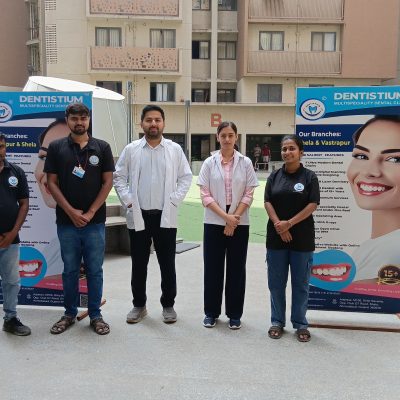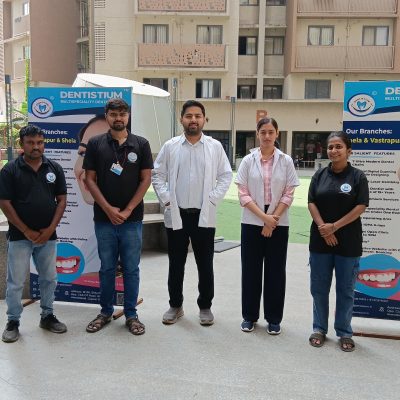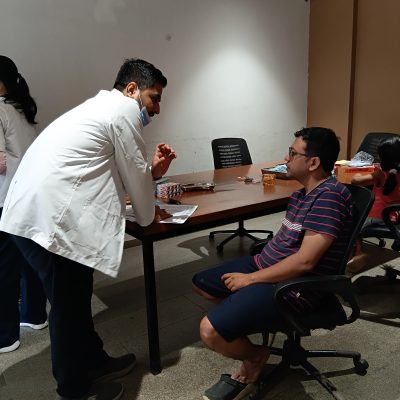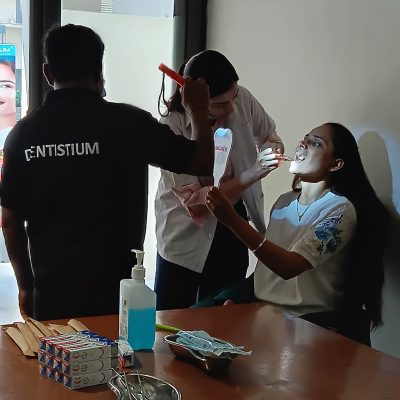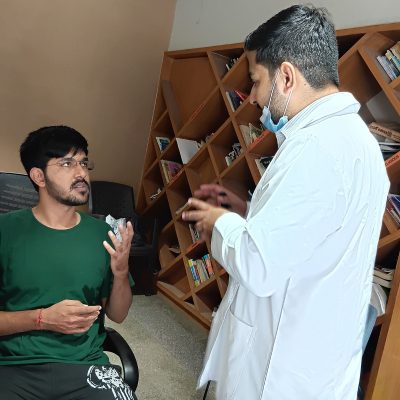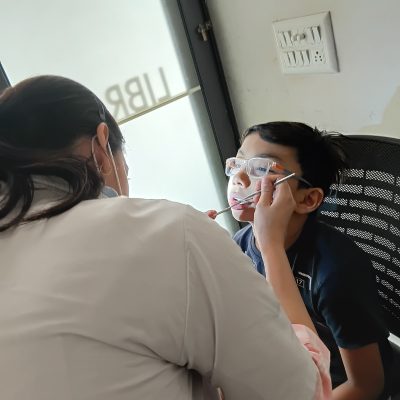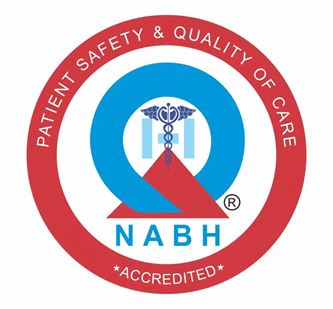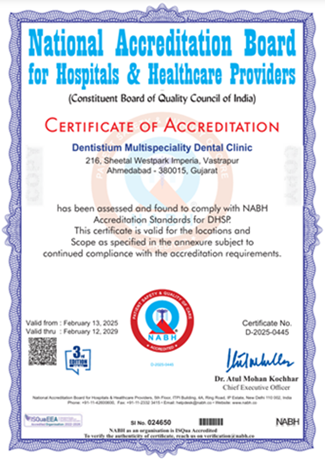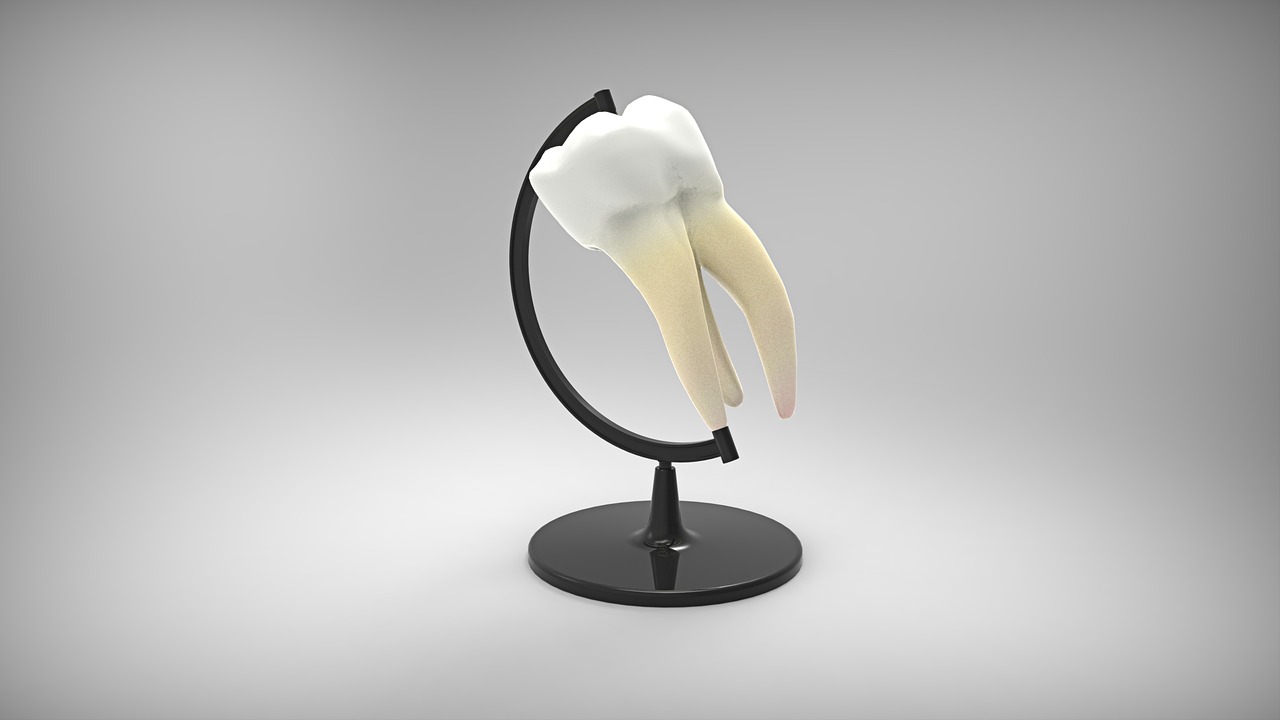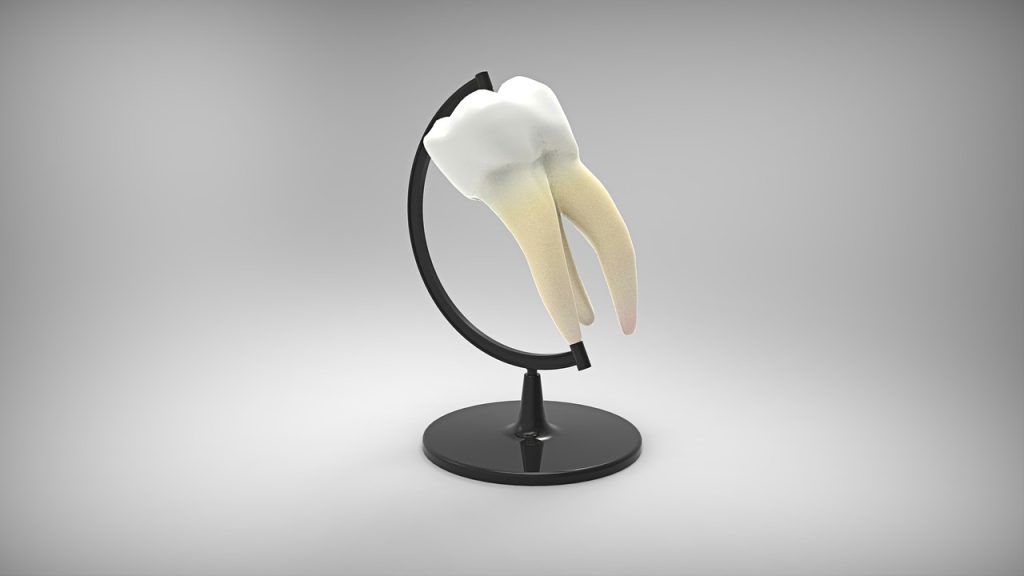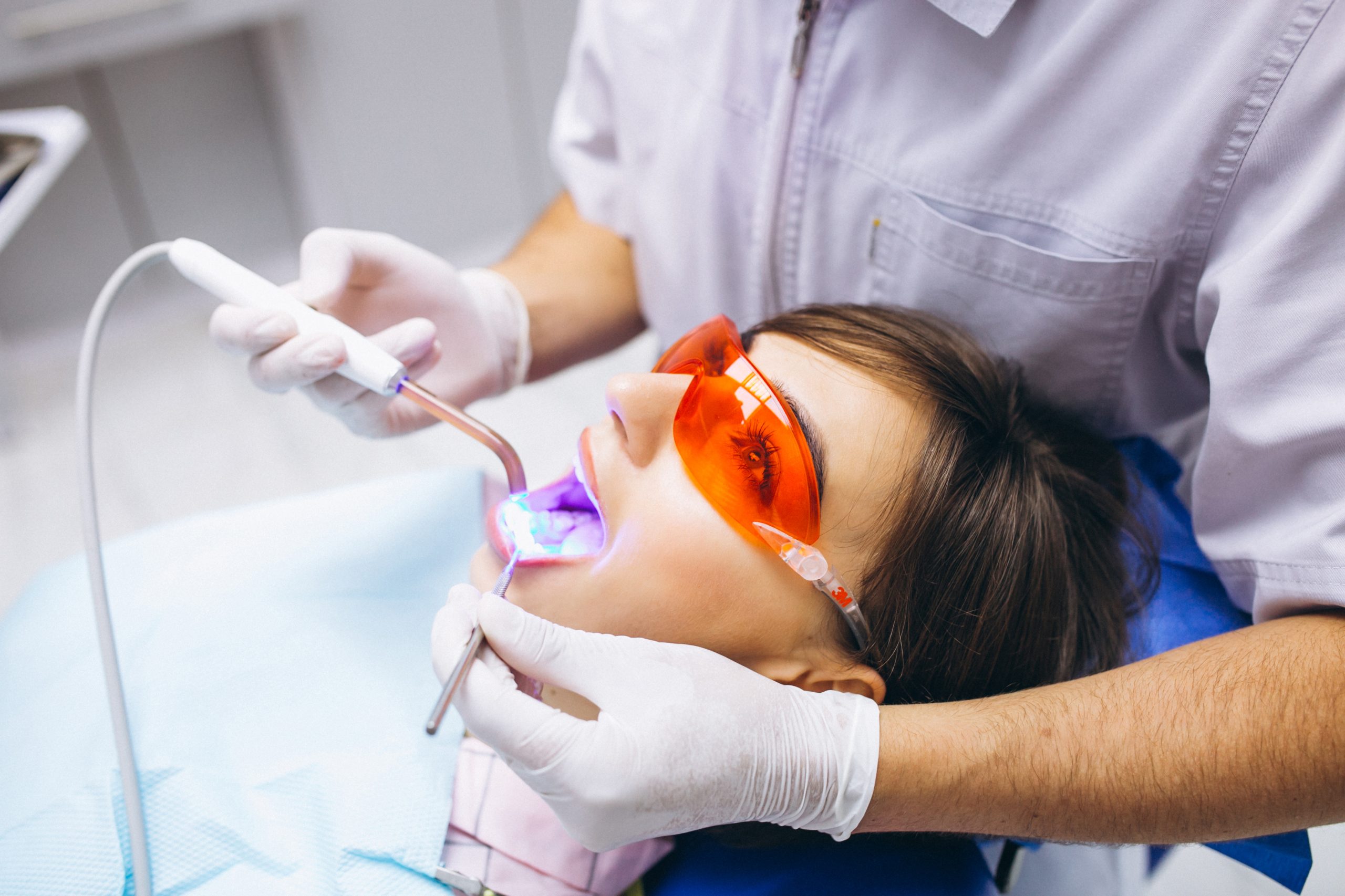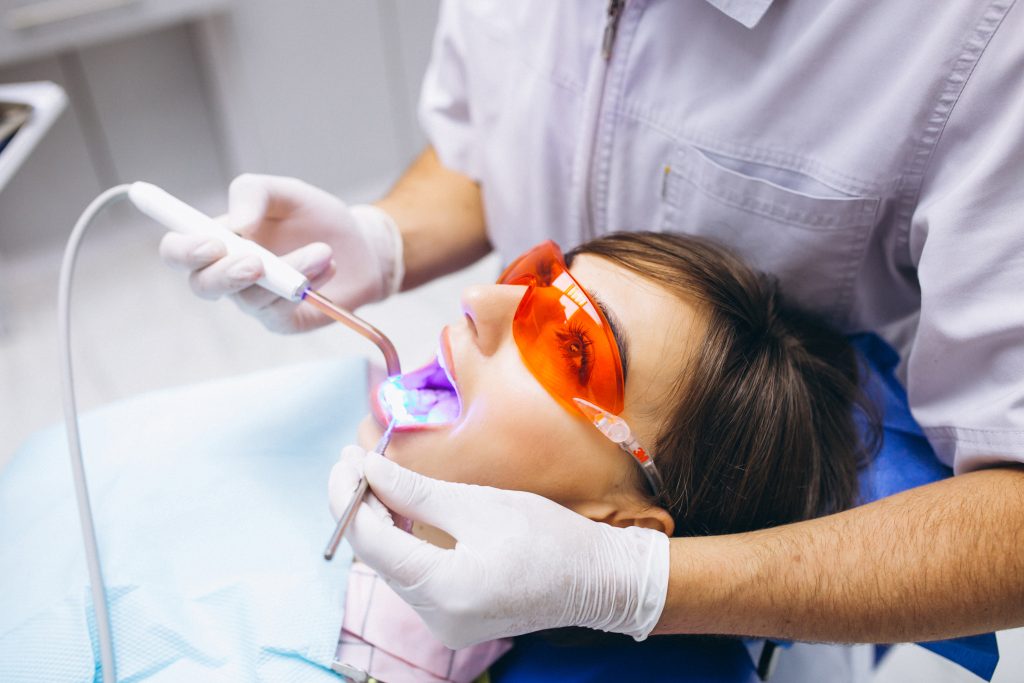Dental awareness Camp at Sheetal Westpark Residency, Vastrapur
Dental Awareness Event at Sheetal Westpark (Vastrapur) – 25th May 2025

Date: 25th May 2025 (Sunday)
Time: 10:00 AM to 1:30 PM
Organized by: Dentistium Clinics (Vastrapur Branch)
Location: Sheetal Westpark Residency, Vastrapur, Ahmedabad
Key Highlights of the Dental Awareness Camp
Dentistium Clinics (Vastrapur Branch) successfully conducted a Free Dental and Health Awareness & Check-up Camp at Sheetal Westpark Residency, Vastrapur, Ahmedabad, on 25th May 2025. The event received a highly positive response from residents, with over 750 participants availing themselves of complimentary dental consultations, health education, and screening services.
Highlights of the Community Wellness Initiative:
1. Encouraging Daily Oral Health Routines
Attendees received hands-on guidance on essential oral hygiene practices such as correct brushing methods, the importance of flossing, and maintaining a clean oral environment. Focus areas included:
Preventing dental decay and gum issues
- Addressing persistent bad breath
- Cultivating lifelong oral care habits
2. Early Detection and Preventive Screening
The event featured free on-site dental check-ups aimed at identifying dental concerns at an early stage. Examinations focused on:
Tooth cavities and tartar build-up
Signs of gum disease or oral infections
Early indicators of more serious conditions such as oral cancers
Attendees received expert advice and were directed to follow-up care if needed.
3. Raising Awareness of Oral Health’s Impact on Overall Wellness
The event featured free on-site dental check-ups aimed at identifying dental concerns at an early stage. Examinations focused on:
Tooth cavities and tartar build-up
Signs of gum disease or oral infections
Early indicators of more serious conditions such as oral cancers
Attendees received expert advice and were directed to follow-up care if needed.
4. Preventive Care as a Long-Term Solution
The program promoted lifestyle changes to help prevent major dental problems. Tips shared included:
-
Choosing tooth-friendly foods and drinks
-
Using fluoride-based toothpaste
-
Avoiding tobacco and limiting sugar intake
-
Making dental visits a regular routine
These strategies aim to minimize future dental complications and related healthcare costs.
5. Strong Community Involvement
Residents of Sheetal Westpark Residency participated actively, creating an environment of collective learning and support. The format encouraged:
-
Personalized conversations with dental professionals
-
Clear, accessible information tailored to all age groups
-
A warm, community-driven atmosphere to discuss health openly
6. Inclusive Outreach to Underserved Individuals
The camp was designed to reach those with limited access to dental services, including:
-
Economically vulnerable families
-
Residents of semi-urban and underrepresented communities
-
Individuals with little prior exposure to professional dental care
By fostering inclusivity, the event reinforced Dentistium Clinics’ commitment to equal access to health resources.
Dentistium Clinics – Vastrapur Branch remains dedicated to championing public oral health through outreach programs that educate, empower, and support healthier communities across Ahmedabad.
Notifications
- Free Dental Health Awareness & Check-up Camp at DENTISTIUM Multispeciality Dental Clinic (Shela-Branch)Free Dental Health Awareness & Check-up Camp at DENTISTIUM Multispeciality …
- Circular for Clinic Timings – Navratri 2025🕒 Circular for Clinic Timings – Navratri 2025 The vibrant …
- Dentistium Navratri Garba Night 2025!🌟💃🕺 Dentistium Navratri Garba Night 2025 – Get Ready to …
Recent Posts
- Dental Implants: Procedure, Purpose & Benefits
 Dental Implants: Procedure, Purpose & Benefits When it comes to …
Dental Implants: Procedure, Purpose & Benefits When it comes to … - The Many Factors Influencing Patient Hygiene Practices
 The Many Factors Influencing Patient Hygiene Practices Maintaining proper hygiene …
The Many Factors Influencing Patient Hygiene Practices Maintaining proper hygiene …Read More "The Many Factors Influencing Patient Hygiene Practices"
- Enhance Your Smile with Dental Crowns: A Complete Guide
 Enhance Your Smile with Dental Crowns: A Complete Guide Your …
Enhance Your Smile with Dental Crowns: A Complete Guide Your …Read More "Enhance Your Smile with Dental Crowns: A Complete Guide"
- October 2025 (1)
- September 2025 (8)
- August 2025 (7)
- July 2025 (6)
- June 2025 (5)
- May 2025 (53)
- April 2025 (2)
- March 2025 (3)
- January 2025 (2)
- November 2024 (1)
- April 2024 (1)
42,971 hits
.
Most Searched Pharmacy products on our site
-
-
-
₹1,917.50Rated 0 out of 5
Effective Oral Care: The ORACURA Water Flosser is your go-to...
-
.
.


























